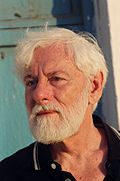A day in November. A day to remember.
On November 29, 1947, the General Assembly of the United Nations adopted, by 33 votes against 13 (with 10 abstentions), the Palestine Partition Plan.
This event has become a subject of endless debates, misinterpretations and outright falsifications. It may be worthwhile to peel away the myths and see it as it was.
BY THE end of 1947, there were in the country -- then officially named Palestine -- about 1.2 million Arabs and 635 thousand Jews. The gap between the two population groups had turned into an abyss. Though geographically intertwined, they lived on two different planets. With very few exceptions, they considered each other as mortal enemies.
This was the reality that the UN commission, charged with proposing a solution, found on the ground when it visited the country.
One of the great moments of my life is connected with this UNSCOP ("United Nations Special Committee on Palestine"). On the Carmel mountain chain, near kibbutz Daliah, I was attending the annual folk dance festival. Folk dances played a major role in the new Hebrew culture we were consciously striving to create. Most of these dances were somewhat contrived, even artificial, like many of our efforts, but they reflected the will to create something new, fresh, rooted in the country, entirely different from the Jewish culture of our parents. Some of us spoke about a new "Hebrew nation."
In a huge natural amphitheater, under a canopy of twinkling summer stars, tens of thousands of young people, boys and girls, had gathered to cheer on the many amateur groups performing on the stage. It was a joyous affair, imbued with camaraderie, radiating feelings of strength and self-confidence.
No one of us could have guessed that within a few months we would meet again in the fields of a deadly war.
In the middle of the performance, an excited voice announced on the loudspeaker that several members of UNSCOP had come to visit. As one, the huge crowd stood up and started to sing the national anthem, Hatikvah ("the Hope"). I never liked this song very much, but at that moment it sounded like a fervent prayer, filling the space, rebounding from the hills of the Carmel. I suppose that almost all of the 6,000 Jewish youngsters who gave their lives in the war were assembled for the last time on that evening, singing with profound emotion.
IT WAS in this atmosphere that the members of UNSCOP, representing many different nations, had to find a solution.
As everybody knows, the commission adopted a plan to partition Palestine between an independent "Arab" and an independent "Jewish" state. But that is not the whole story.
Looking at the map of the 1947 partition resolution, one must wonder at the borders. They resemble a puzzle, with Arab pieces and Jewish pieces put together in an impossible patchwork, with Jerusalem and Bethlehem as a separate unit. The borders look crazy. Both states would have been totally indefensible.
The explanation is that the committee did not really envision two totally independent and separate states. The plan explicitly included an economic union. That would have necessitated a very close relationship between the two political entities, something akin to a federation, with open borders and free movement of people and goods. Without it, the borders would have been impossible.
That was a very optimistic scenario. Immediately after the committee's plan was adopted by the General Assembly, after much cajoling by the Zionist leadership, war broke out with sporadic Arab attacks on Jewish traffic on the vital roads.
When the first shot was fired, the partition plan was dead. The foundation, on which the whole edifice rested, broke apart. No open borders, no economic union, no chance for a union of any kind. Only abyssal, deadly, enmity.
(Note: You can view every article as one long page if you sign up as an Advocate Member, or higher).





